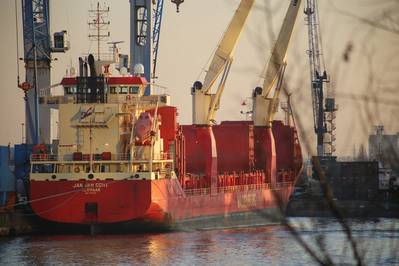Container Shipping Rate Collapse Continues
The ocean freight industry saw a slump in global long-term rates of unprecedented proportions in May, as the contracted cost of shipping containers fell by 27.5%. The development, detailed by Xeneta’s Shipping Index (XSI), marks the ninth consecutive month of rates drops, and is the largest ever monthly fall recorded on the XSI.
“If industry observers were left wondering just how bad it could get for carriers after the 10% fall in long-term rates seen in April, here’s the answer,” said Patrik Berglund, CEO of Oslo-based Xeneta. “This is the largest drop we’ve ever experienced on the XSI, which charts real-time global rates developments, and it paints a bleak picture of the state of the industry.”
“Monthly declines have become the ‘new normal’ at present, but this is a collapse. The reasons behind that are manifold, but the main driver is the fact that May marks the point when existing 12-month contracts in the US come to a conclusion and new agreements come into force. These reflect the reality of today’s subdued markets, so are priced much, much lower than their predecessors. The impact of that on the wider industry is here for all to see.”
The decline is especially noteworthy as it marks the first time long-term rates have recorded a year-on-year decrease since late 2020.
“The global XSI is now down 42% year-on-year,” Berglund said, “and with continued macroeconomic uncertainty, evaporating trade volumes, and a wider sense of geopolitical flux, short-term industry omens do not suggest a move ‘back into the black’ at any time soon. This is very worrying for carriers, who are working overtime to manage capacity - adjusting vessel speeds, restructuring services and blanking sailings - and all to no avail. Those that have the greatest exposure to long-term contracts will be feeling increasing financial pain.”
Long-term developments in the US grab the XSI limelight. The US import sub-index collapsed 40.6% month-on-month, and has now lost 54.6% of its value since peaking in October last year.
In dollar-terms, this equates to the average contracted price of shipping containers between the Far East and the US West Coast falling by $6,140 per FEU year-on-year (a 76% drop on this leading global route). Total import volumes reveal the parlous state of affairs, with volumes into the U.S. down by 21.1% in Q1, while those originating from the Far East are down 25.9%. Conversely, the US export sub-index recorded limited growth, with a 5.1% month-on-month climb.
Perhaps unsurprisingly, the scale of the decline in the US import sub-index was matched only by that in Far East exports, with this sub-index falling 38.6% in May. This index has now lost more than half its value in 2023 alone and is 58.5% down year-on-year. In terms of volume, containerized exports out of the Far East fell by 10.5% in Q1 and are now only 3.3% up against Q1 2019 figures. The XSI for Far East imports fared better, relatively speaking, with a fall of 6.9%, leaving the index down by 28.6% year-on-year.














